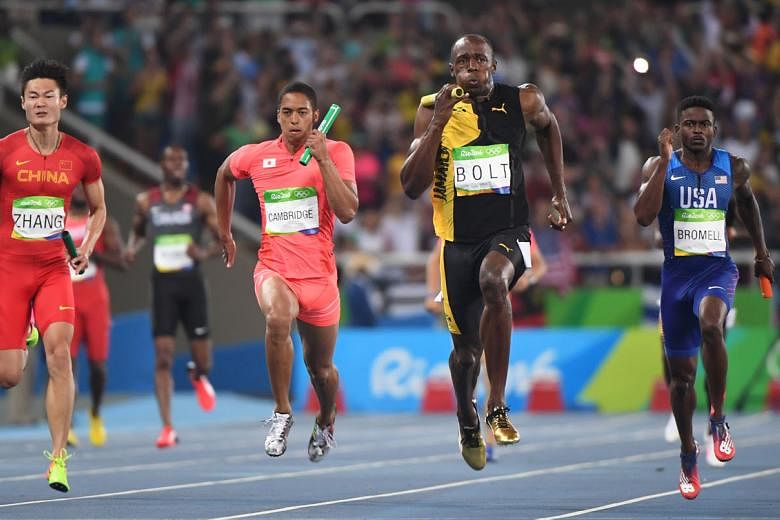TOKYO • When Aska Cambridge anchored Japan to the silver medal in the men's 4x100m relay at the Rio de Janeiro Olympics, he was wearing a "bra" on his feet.
Well, not exactly. The 23-year-old's spikes, which helped him hold off opponents in a stunning run to finish second behind Jamaica's Usain Bolt, were produced in the same factory that produces sports bras.
Cambridge first started wearing the spikes, which are made by US sports gear maker Under Armour, after he joined Dome Corp last year. Dome serves as the Japanese agent for Under Armour.
The special feature of the spikes is its seamless heel cup, a technological innovation in which the rounded body of the shoe is covered with one continuous piece of material.
Conventional shoes use several parts for the heel portion, creating a gap between the shoe and the athlete's heel.
Sponge or vessel-like insoles are inserted inside the shoe to prevent slippage by the foot when the runner makes contact with the ground.
In contrast, Under Armour uses a single piece of material that eliminates the gap and the need for stitching, and gives the sensation of the shoe being moulded to the foot.
Spikes produced for Cambridge, unlike those for general customers, are commissioned to a US sports bra factory that uses advanced three-dimension moulding techniques.
After hearing about this, Cambridge said with an embarrassed smile: "I suppose I'm wearing a brassiere."
Regardless, it proved the perfect choice for Cambridge, whose main point in choosing gear is "how well the upper portion fits my foot".
After competing at the Japan National Championships in June, he custom-ordered a pair for the Rio Olympics which were made using 3D scans of his feet.
The new spikes helped him advance to the semi-finals in the 100m and anchor the relay team to a historic silver medal.
"There is no unnecessary space (inside) and the hold (on my feet) is incredible," he said. "They helped me win a medal."
Equipped with his perfectly matched partner, Cambridge and his "bra-spikes" will now take aim at becoming the first Japanese sprinter to officially break the 10-second barrier in the 100m.
Compatriot Yoshihide Kiryu clocked a wind-assisted 9.87sec last year.
THE JAPAN NEWS/ANN

